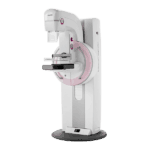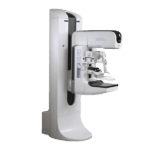It’s important to have the right agent, and often times the right medium depends on the procedure as well as the patient
When engaging in a diagnostic imaging procedure it’s vital to understand the procedure in detail. It’s important for the doctor performing the procedure to explain everything to the patient. It’s also vital for the patient to ask every question that they may have in mind. From radiation concerns, to possible to discomfort, to ultimate expectations it is of utmost importance for the patient and doctor to have an understanding.
Often times one particularly difficult subject is that of a contrast agent. A contrast agent is defined as “A substance introduced into a part of the body in order to improve the visibility of internal structure during radiography.” It’s important to be able to have the right agent and often times the right medium depends on the procedure as well as the patient.
Let’s talk about contrast mediums for mammography and what we know. Based on studies dating back to 2003 it’s been concluded that enhanced digital mammography is useful in lesions in mammographically dense breasts. The question about which type of media is used or could be used is a fair one to ask, even though contrast agents in mammography are not yet completely implemented.
An iodine based contrast medium can be used. Iodine based means that the media used has a high concentration of iodine. The patient’s initial thought may be a little panic but it doesn’t mean that it’s something to fear. The contrast agents are high osmolar and low osmolar contrast agents. The contrast medium is applied through the use a needle and the level of concentration depends a great deal on how radiopaque the agent itself will be.
Get Started
Request Pricing Today!
We’re here to help! Simply fill out the form to tell us a bit about your project. We’ll contact you to set up a conversation so we can discuss how we can best meet your needs. Thank you for considering us!
Great support & services
Save time and energy
Peace of mind
Risk reduction
Some things to understand about contrast agents in general include the following:
- It is used in most diagnostic imaging procedures.
- Dosing is calculated on basis of lean body weight, among other things.
- Risk of injection may increase risk of adverse reaction.
- Iodine based contrast agents may cause a warming sensation through the body shortly after injection.
There are always concerns about allergic reactions based on existing allergies of the patient to components of the contrast media.
Contrast enhanced mammography will become a major part of the breast cancer equation based on the results of several trials performed over a decade long period. It’s important to provide patients with the knowledge and understanding of how this particular advent can only help. It’s also vital as a physician to be able to lobby for this particular advent because it can only enhanced a physician’s reputation in looking to provide the best treatment.
If you have any questions about mammography systems or any other digital imaging systems please feel free to give us a call. Our dedicated team of professionals here at Amber Diagnostics looks forward to answering your questions.
Bobby Serros
President/CEO
407.438.7847
bobbys@amberusa.com
References:
http://radiology.rsna.org/content/228/3/842.full
http://www.ncbi.nlm.nih.gov/pubmed/15973130



